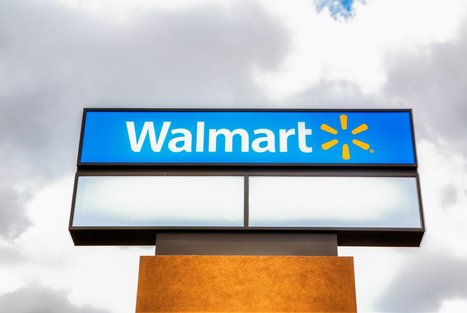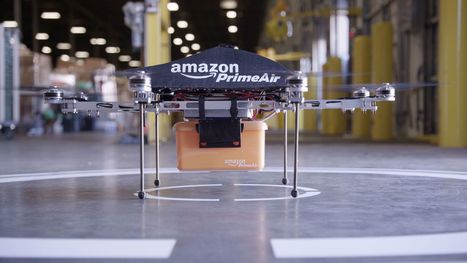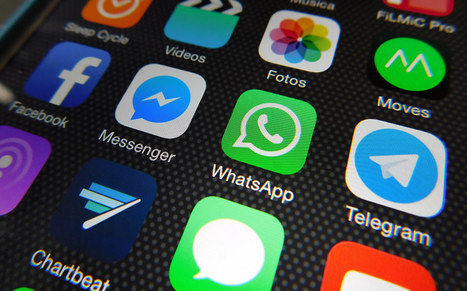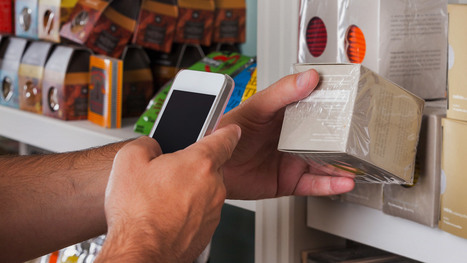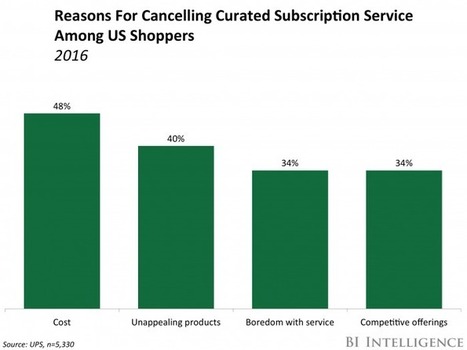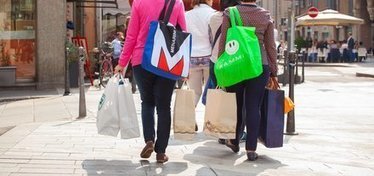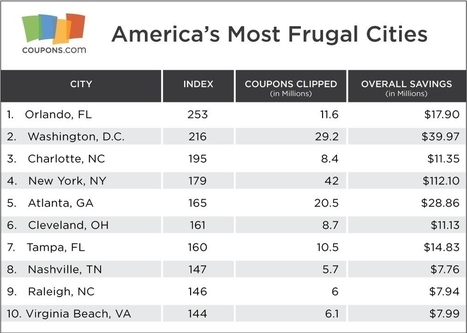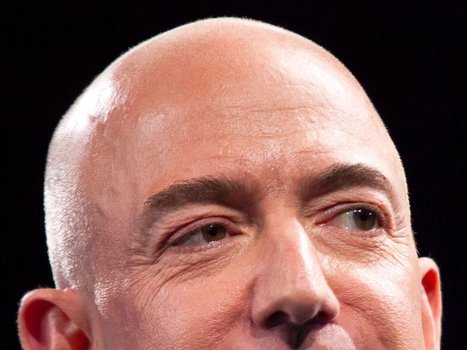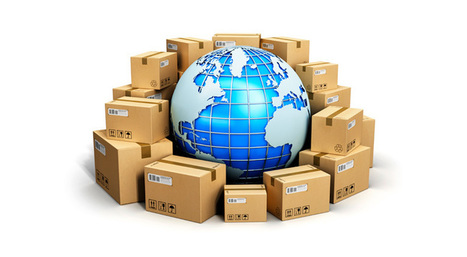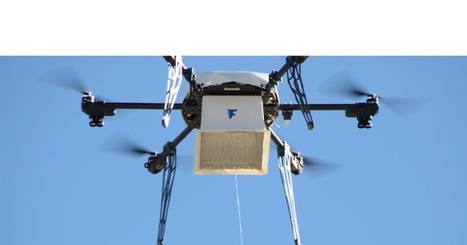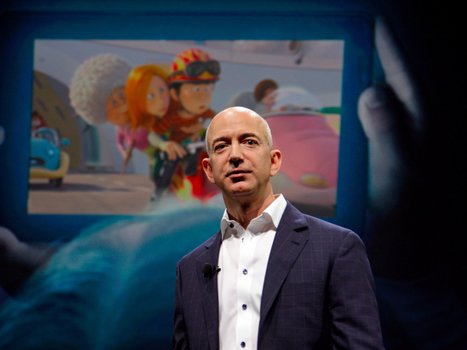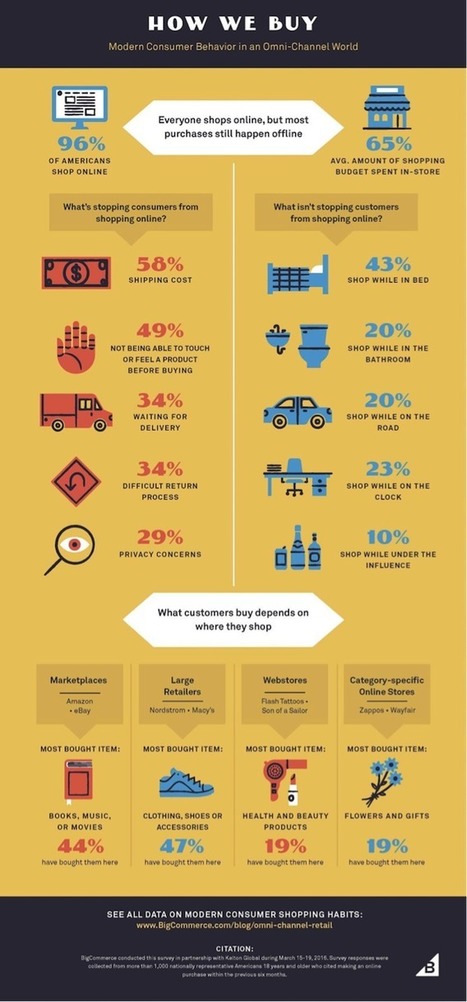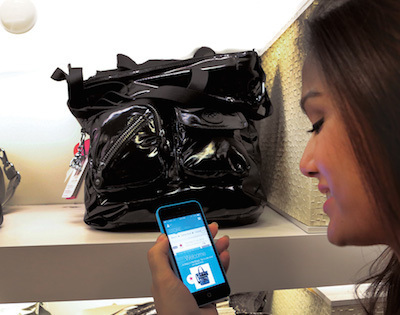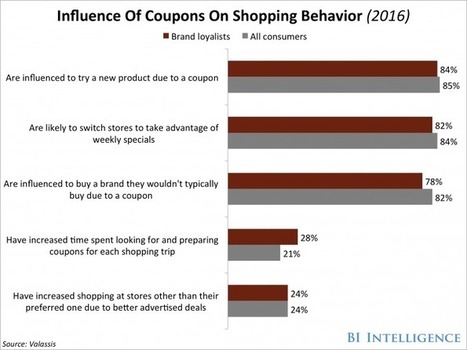 Your new post is loading...
 Your new post is loading...
Wal-Mart is in talks to acquire web retailer Jet, the Wall Street Journal reports. Sources said the deal could be worth as much as $3 billion.
Acquiring Jet could help Wal-Mart in its efforts to mount a serious threat to Amazon’s e-commerce supremacy. Its Walmart.com site offers about 11 million products, compared to about 260 million on Amazon, and attracted 88 million online visitors in February, compared to more than 1.7 billion for Amazon, according to comScore.
Year-old Jet, led by Diapers.com founder Marc Lore, has drawn more than $500 million in financing capital from venture firms New Enterprise Associates and Accel Partners as well as mutual-fund company Fidelity Investments and bank Goldman Sachs Group.
Dive Insight:
Just a few days past Jet’s first birthday comes the bombshell news that Wal-Mart is closing in a deal to purchase the e-commerce upstart.
Late last month, CEO Lore told Fortune that Jet sold $90 million in merchandise in May, compared to $33 million in December, and scoffed at the notion that the company might never be profitable, citing the support of deep-pocketed (not to mention patient) investors....
Via Douglas G Hall
The world might be a mess, but look on the bright side: Men’s shaving products are much better than they used to be.
Thanks to several online shaving start-ups, razors, creams, gels and other paraphernalia are now cheaper, of higher quality and more convenient to purchase than ever before. Last week one of the upstarts, Dollar Shave Club, was acquired by the consumer products giant Unilever for $1 billion. For shaving behemoths like Gillette, it is the first skirmish in the coming guerrilla war for men’s faces, not to mention other parts. (Dollar Shave also makes bathroom wipes for men.)
This column usually focuses on the technology industry, an area that sounds far removed from shaving. But the Dollar Shave acquisition signals something bigger than a mere improvement in shaving — it also underscores a consumer products revolution that would not have been possible without technology.
Hilarious online ads passed along social networks allowed Dollar Shave to create instant customer recognition — in other words, a brand — far more quickly, and for far less money, than a shaving company could have managed a decade ago. Online distribution allowed it to get products into consumers’ hands without a costly retail presence. In fact, by cutting out on retail, and shipping products to people’s homes on a subscription basis, the company made buying shaving products more convenient than going to a store....
"The U.K. is a leader in enabling drone innovation," Amazon crowed. Amazon has said it would pioneer package delivery by drone overseas if the U.S. continues to block its methods stateside. Now it’s taking another step down that path. The online retail giant announced Monday evening that it had reached an agreement with the U.K. government to expand the types of drone tests it is conducting in the region. The new arrangement will allow Amazon to test drone flights that extend beyond the line of sight of the pilot in suburban or rural areas — a necessary ingredient in the aerial delivery of packages that the U.S.’s Federal Aviation Administration currently doesn’t allow....
Tuesday marked the second annual Amazon Prime Day, which provided Amazon's premium members with deep discounts on a number of products.
The deals were available in 10 countries, with featured deals in each region.
While many of the Prime Day sales were for Amazon products — Alexa, the Fire TV stick, and more — there were a few discounts on other products.
The list of the most popular products in each country, as announced by Amazon, was quite a collection of goods. The top-selling item in Japan was a breakfast cereal; in the US, a pressure cooker was the most sought-after purchase.
Shoppers are warming to beacons and virtual reality.
The majority of consumers are open to location-based technology as long as it improves their shopping experience, according to a new study.
In the no-surprise department, coupons are viewed as the biggest incentive, based on a survey of 1,400 U.S. consumers focused on shopping habits and emerging retail technology conducted by Walker Sands.
While a third (33%) of consumers aren’t open to beacons or any location-based technology in stores, 67% say in-store tracking could improve their in-store shopping experience.
Consumers are increasingly turning towards messaging, such as SMS and chat apps like Facebook Messenger and WhatsApp to engage with retailers, a global study has found.
Research from global trade body Mobile Ecosystem Forum (MEF) supported by Mblox says that 76% of consumers have received communications from businesses such as retailers, banks and healthcare providers via SMS and that 65% have engaged with companies via chat apps.
The study, part of MEF’s Future of Messaging Programme, indexes the messaging habits of nearly 6000 respondents across nine countries worldwide. The financial services sector is the most active in enterprise messaging, with 33% of respondents having received an SMS for activities such as account activation and balance checking. 22% have done so via a chat app.
Retailers and eCommerce (websites and email service providers) are also using messaging to engage their consumers with 24% using SMS and 17% using chat apps. 23% of consumers have received a notification for delivery of goods via SMS and 16% via a chat app. The rise in demand for convenience with services like click-and-collect and last-mile notification is helping to drive this sector....
Via Douglas G Hall
According to a recent survey looking at consumers’ attitudes toward retail technology, omnichannel personalization solution RichRevelance found shoppers are still not comfortable with all technology has to offer the retail industry.
Polling more than 1,000 consumers, the “Creepy or Cool: 2016 Consumer Survey” offered insight into the types of retail technology that appeals to consumers and what turns them off.
Sixty-seven percent of the survey participants labeled facial recognition technology as creepy when asked about it being used by retailers to direct salespersons toward high-value shoppers. (An even higher percentage of Millennials — 71 percent — said they found it creepy.)...
Subscription services have become popular among online shoppers, but those same shoppers are also abandoning these services.
Through these subscriptions, customers make recurring payments and receive order shipments at regular intervals, and they have become popular because they let consumers refill products they need to replenish often, such as health and beauty products.
These services typically personalize orders based on a shopper's interests and style, which the companies often learn through connected social media accounts and quizzes. This experience mirrors the personalized service customers would get inside brick-and-mortar stores from sales associates.
So interest in these services has remained high, as 10% of U.S. shoppers have enrolled in one, and another 33% would consider doing so, according to the latest UPS Pulse of the Online Shopper report.
But satisfaction in these services is dropping, as 61% of those who have signed up have since canceled. And there are four main reasons why....
The American economy depends mightily on consumer spending, so this report bodes well for a healthier 2016, economists say. The wage gap and the economy’s failure to produce adequate income improvements even in a healthier economy have stymied spending for months. But that’s recently been changing, as reflected in this report.
Although there seems to be an increase in disposable income and wages, that could be a problem for retailers as more consumers are choosing to spend on experiences instead of accumulating material objects. Younger shoppers are especially prone to spending on experiences, according to a PwC survey published last year, which found that millennials said that more than half (52%) of their holiday spending would be experience-related, compared to 39% for older consumers.
Consumers are also choosing to save or pay off debt rather than spend, and when they do, they are increasingly favoring investing in home improvements. Retailers' recent earnings reports reflected these trends, as apparel-heavy retailers like Macy's, Kohl's, and J. Crew reported disappointing results while home improvement retailers beat expectations. These changes are forcing legacy retailers to reconsider their marketing strategies and physical stores, offering more value to the consumer with no-cost online resources and free in-store events....
Selling through Amazon is extremely tempting for a simple, logical reason: you don’t have to pay for digital marketing to drive traffic to Amazon. The volume is bigger than any marketer can dream. Before Journelle, I worked at an Amazon subsidiary, Quidsi, and during my tenure, our core strategy pivoted from investing in its stand-alone sites like Diapers.com and Soap.com to rapidly scaling sales on Amazon’s Marketplace, exactly for this reason. Amazon Marketplace vendors simply need to offer the most competitive price on a product to win the coveted Amazon “Buy Box”. “Buy Box” winners take all of the sales volume without any marketing spend required, making up for margin loss and commission to Amazon. To scale on Amazon, Quidsi capitalized on selection breadth and uniqueness, and created effective and predictive pricing algorithms to beat their competitors. Overnight, day-to-day business became more like trading stocks than traditional online marketing. At the same time, there are downsides to relying too much on Amazon. First, there’s the risk of having too much of your revenue coming from a platform you don’t control. There’s also the risk that if you offer all your products on Amazon, you’ll cannibalize your own direct sales (and lose those higher margins). Finally, for high-end brands, Amazon’s site does not offer luxury customers a distinctive experience....
For the sixth year, Coupons.com, Quotient Technology Inc.'s (NYSE: QUOT) flagship savings destination, is releasing America's Most Frugal Cities list, showcasing cities with the most budget-conscious shoppers. According to the 2015 Coupons.com Savings Index[1], shoppers in 2015 clipped more than 1.6 billion digital coupons and saved more than $2.3 billion on consumer packaged goods, including grocery and household items.
This year, residents in Orlando are once again the savviest savers in the nation, reclaiming the title of Americas Most Frugal City from San Francisco, which took the lead in 2014 for the first time. Orlando won the 2013 honors and slipped to the third-ranked position in 2014. Rounding out the top 10 list, Washington, D.C., took the #2 spot for the second year in a row. Charlotte, N.C., moved up two spots to #3 and for the first time ever, New York City cracked the top 10 list as the #4 most frugal city in 2015. Atlanta (#5), Cleveland (#6), and Tampa, Fla. (#7), came in at a virtual tie, with Nashville, Tenn. (#8), narrowly beating Raleigh, N.C. (#9) and Virginia Beach, Va. (#10) to round out the top 10....
RetailMeNot, Inc., a leading digital savings destination connecting consumers with retailers, restaurants and brands, both online and in-store (www.retailmenot.com/corp), released a new study today, titled "The Evolution of Dining in the Digital Age," that explores digital savings and mobile habits among restaurant patrons, as well as general habits related to dining out and spending.
More than ever before, consumers are turning to their digital devices to help make dining out decisions easier, including searching for nearby locations and deals. In fact, nearly a third of consumers (32%) have used a deal that they found online or on their mobile device at a restaurant in the past three months. But that's not all they're using their smartphones for when dining; the survey breaks down when, where and how their mobile devices impact the dining journey....
It looks as if Amazon is getting into the food business.
A new report from The Wall Street Journal says the online retail giant is gearing up to launch its first brand of foodstuffs by "as soon as the end of the month."
These "private-label brands" will reportedly include Happy Belly (including nuts, tea, and oil), Wickedly Prime (snacks and treats), and Mama Bear (baby products). But they are designed and created by Amazon, with all the profits going straight to the company....
|
In total, 2016 Prime Day was the biggest U.S. sales day ever, surpassing Cyber Monday 2015 by 19%, according to Slice Intelligence, which measures all digital commerce activity and customer loyalty. Slice also found that, on Prime Day, Amazon held 74% of the market share of all U.S. consumer ecommerce.
Sales totals aside, here are some significant takeaways from Prime Day pertaining to Amazon’s customer relationships: - By offering exclusive deals to members, Amazon continued to showcase the value and advantages of Amazon Prime. Membership continues to grow, from an estimated 75 million at the end of 2015 to 85 million now — with projections that it will reach 110 million by the end of 2016.
- The deepest discounts seemed to be for Amazon devices such as the Tap, Echo and Kindle Fire. Despite the low cost, the premium devices align consumers even more closely with Amazon and make it easier for them to shop and order – thereby facilitating future purchases with the online retailer.
- Prime Day also stimulated customer engagement through the Amazon app. Survey Monkey, which tracks mobile app usage, reported 12 million mobile users on Prime Day, a 50% increase from the 8 million users on an average day. Usage for the week went up 35% in all. Research further showed that 50% of Walmart app users also use the Amazon app — however, very few Amazon app users also use Walmart’s app, demonstrating Amazon’s dominance in the category.
- The opportunity to reach new customers outweighed the negative experiences of others. Some glitches were reported, such as problems with checkouts early in the day and complaints on social media that sale prices applied to a limited number of products. But the record number of new subscribers far surpassed the number of shoppers who were dissatisfied with the event. Ultimately, Amazon may view that as a worthwhile trade-off, banking on the recurring revenue from new customers who will spend more time on Prime and increase their lifetime value....
The rate of eCommerce growth as steadily outpaced total retail growth by a multiple of three to four times, Amazon.com’s growth has outpaced eCommerce by one to two times, giving it a dominant lead in many of the world’s most mature eCommerce markets. According to Forrester, Amazon drove 60% of total US online sales growth in 2015, capturing $23 billion more in U.S. eCommerce sales in 2015 than the previous year (up from $77 billion in 2014 to $100 billion). Alex McCord of Compass Marketing, an agency which works with some of the world’s largest CPG brands: “We’re now seeing the advent of what I’ll call e-commerce native companies: companies that come onto Amazon and other e-retailers and who are able to gain traction through getting a ton of recent reviews. They know how to work the Amazon algorithm and then launch products that, from the perspective of a brand in the brick-and-mortar world, have as low as zero market share. But in the world of unbranded search on Amazon and other retailers, they’re enormous players.” So who is winning on Amazon? Profitero analyzed our Amazon FastMovers reports between January-May 2016 to rank the best-selling products at Amazon in several key categories. We then identified the number of products that featured in the top 100 best sellers by brand to determine best-selling brands by category....
7-Eleven Inc. and a tech startup called Flirtey have beaten Amazon to the punch in making the first drone delivery to a customer’s home in the U.S.
Most already know 7-Eleven, the convenience store retail chain that boasts about 10,800 stores in North America and 59,500 in total around the world.
Flirtey is a privately held company based in Reno, Nevada, which builds and operates drones to make deliveries that are needed in humanitarian and health work, retail and food industries.
Rather than adapting existing unmanned aerial vehicles, Flirtey builds its own, develops the software to run them, and creates proprietary packaging and containers to keep items secure during delivery, according to CEO Matt Sweeney.
During the 7-Eleven delivery, which took place in Reno, Nevada on July 10th, Flirtey successfully transported: Slurpees, a chicken sandwich, donuts, hot coffee and candy to the home of the family who placed the order....
Amazon is bringing back "Prime Day," its annual Black Friday-like sales event where hundreds of thousands of special discount offers are made exclusively to its Prime members. Last year's inaugural Prime Day brought in an additional $400 million in revenue, according to JP Morgan. This year's event is expected to be even bigger in terms of revenue and the number of deals offered, making it by far Amazon's largest single-day sales event in history. But according to a note published by JP Morgan on Thursday, the implications of Prime Day are much bigger than the single day's additional revenue....
Members of retailers’ customer loyalty programs generate between 12 percent and 18 percent more revenue for retailers than do customers who are not members of the loyalty programs, according to new research from Accenture Interactive.
This key finding was based on a survey of retailers across specialty, big-box, department, drug and convenience stores in the United States. The Accenture research sought to identify key trends and challenges of retailers’ loyalty programs.
“Today’s customer loyalty programs are an increasingly expensive, complex and expansive business that extend beyond the marketing team into the entire organization,” said Farrell Hudzik, managing director of Accenture Interactive’s Global Loyalty and Rewards practice. “Given that loyalty program members generate significant incremental revenue compared with non-members, retail loyalty program leaders must anticipate future growth trends and capture the opportunity to differentiate in an increasingly fragmented marketplace.”...
Via Douglas G Hall
The good news today regarding the Brexit situation is that the news hasn’t gotten worse. The markets were looking a bit more bullish this morning as early gains in Europe pushed the U.S. markets toward clawing back some of the value that evaporated like water on a hot dish over the last few days.
The damage, however, has been profound — and it is still uncertain whether the break in the plunge today is a sign of turnaround now that everyone has calmed down a bit, or a temporary breather before the next big plunge. The damage has also been uneven, with some segments in line to get hit particularly hard. Segments like eCommerce.
What does it look like by the numbers?...
A new report answers the questions, how many products does Amazon actually carry, and in which categories. And it shows the incredible impact third-party merchants have on Amazon's selection.
The report from 360pi shows that Amazon alone carried 12,231,203 total products as of May 2016, excluding Books, Media, Wine, and Services - note that product variants were not included in the analysis.
But when products available from marketplace sellers were included, the total number of products increased almost 30X to a total of 353,710,754 products offered by Amazon and its marketplace sellers combined (applying the same exclusions noted above).
The top 5 categories based on the number of products listed on Amazon's U.S. site, including marketplace sellers (again, the same exclusions apply) are....
In looking to solve this problem and figure out exactly what it is that is convincing consumers to buy online, BigCommerce commissioned a study into the modern consumer journey. We learned how, when, why and where U.S. consumers buy today –– and more so, what is stopping them from doing so.
This information is incredibly important for retailers looking to sustain and grow their revenue. In today’s omni-channel world, brands must be strategic about merchandising on their various channels and need to fully understand why or why not their customers are clicking the buy button –– no matter where it appears.
Check out the infographic below for key insights or read the full State of Omni-Channel Retail Report....
Retail profits are plummeting. Stores are closing. Malls are emptying. The depressing stories just keep coming. Reading the Macy’s, Nordstrom, and Target earnings announcements is about as uplifting as a tour of an intensive care unit. The Internet is apparently taking down yet another industry. Brick and mortar stores seem to be going the way of the yellow pages. Sure enough, the Census Bureau just released data showing that online retail sales surged 15.2 percent between the first quarter of 2015 and the first quarter of 2016. But before you dump all of your retail stocks, there are more facts you should consider. Looking only at that 15.2 percent “surge” would be misleading. It was an increase was on a small base of 6.9 percent. Even when a tiny number grows by a large percentage terms, it is often still tiny. More than 20 years after the internet was opened to commerce, the Census Bureau tells us that brick and mortar sales accounted for 92.3 percent of retail sales in the first quarter of 2016. Their data show that only 0.8 percent of retail sales shifted from offline to online between the beginning of 2015 and 2016. So, despite all the talk about drone deliveries to your doorstep, all the retail execs expressing angst over consumers going online, and even a Presidential candidate exclaiming that Amazon has a “huge antitrust problem,” the Census data suggest that physical retail is thriving. Of course, the shuttered stores, depressed execs, and tanking stocks suggest otherwise. What’s the real story?...
Coupons are quickly growing as a significant component of beacon-enabled proximity marketing thanks to strong redemption rates, with brands and retailers forecast to deliver 1.6 billion coupons a year by 2020, according to a new report from Juniper Research.
The results point to how proximity marketing is gaining traction as retailers look to engage more deeply with consumers in and around their stores, prompting the volume of beacon-enabled coupons to grow quickly from the 11 million expected to be delivered in 2015. However, the research also underscores the potential danger of turning beacons into nothing more than another offer channel, which is likely to cause shoppers to lose interest.
“I would imagine that coupons will represent a key plank of any beacon-based proximity marketing strategy,” said Dr. Windsor Holden, head of forecasting and consultancy at Juniper Research as well as author of the report....
Brand loyalty is important to retailers, but one tool can lure loyal shoppers away to other establishments.
Coupons are still one of the most effective tools to attract customers away from brands and retailers to which they are loyal, according to a report from Valassis.
Furthermore, coupons are just as influential among average consumers as they are among brand loyalists:
- 84% of all consumers (not including brand loyalists) would likely switch stores in order to capitalize on weekly specials, compared to 82% of brand loyalists.
- Coupons would lead 82% of all consumers to purchase a product from a brand they would not otherwise, compared to 78% of brand loyalists
- 85% of all consumers would purchase a new product because of a coupon, compared to 84% of brand loyalists....
There's more evidence to support the growing importance of mobile devices along the path to purchase.
According to Nielsen's fourth-quarter 2015 Mobile Wallet Report, 37 percent of respondents said their purchases start with mobile shopping more than one-quarter to half of the time.
The report compares mobile use from the fourth quarter of 2015 to the same period the year before. It found that shoppers are using mobile devices, particularly smartphones, to assist with in-store sales more frequently than for online shopping.
Roughly 72 percent are researching an item or checking prices on a smartphone before buying. Store locators are popular with 60 percent of smartphone users, and 55 percent are using mobile coupons.
Reviews are popular with slightly more than half of all mobile device users and 44 percent of smartphone users use digital lists while shopping....
|



 Your new post is loading...
Your new post is loading...

